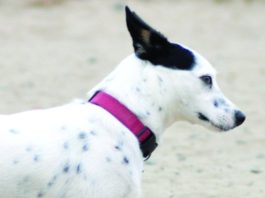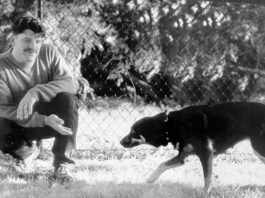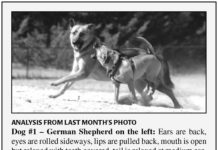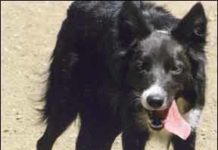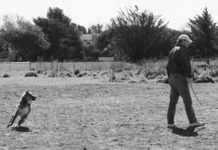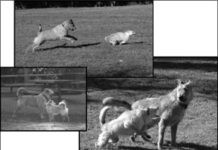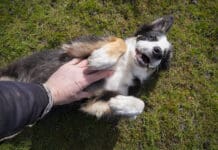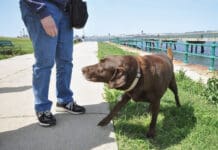Properly Interpreting Your Dog’s Body Language
It's not uncommon for humans to misread perfectly normal play behavior and interrupt/separate dogs who are having a rousing good time together. At the end of Week 2 of my group good manners classes and every week thereafter we have play sessions where the dogs get to play with their canine classmates. In each new class there is at least one owner, often more, who is very tense about her dog's play behavior.
Dogs Communicate Well Both Verbally and With Body Language
You may not want to hear it, but your dog is trying to tell you something. We’ll help you figure out WHY he is barking and how to get him to stop. Who says dogs can’t talk? In less than 30 minutes, I had been treated to five audible canine communications, each with a clear and distinct meaning and purpose. While dogs are, indeed, exquisite body language communicators, they are no slouch in the vocal communication department.
Determining the Cause of Your Dog’s Panting
I’m awakened by the exhalation of my Border Collie’s warm breath on my face: heh-heh-heh. I slowly open one eye and focus on the nose just inches from my own. I may be anthropomorphizing, but I suspect he’s grinning. There it is again – a breathy heh-heh-heh. Wait a minute! Is he just panting or is he laughing at me? Given the way dogs are designed, panting is a very normal bodily function. Dogs don’t have sweat glands throughout their body to expel heat like humans do.
Minimizing Language Barrier Between Human and Canine
Human-dog interactions can be more difficult than dog-dog ones, since our native languages are so different. Our series of three photos this month depicts a classic conflict between a canine and a human; the two are strangers and neither really understands what the other is communicating. Similar interactions are played out every day in communities across the country, in which well-intentioned humans do all the wrong things in their efforts to be friendly with dogs.
Understanding Your Dog’s Body Language
Otto has gotten short shrift lately, poor guy. My husband and I had the brilliant idea of undertaking a minor home remodeling project over the holidays – just the bathroom! As is often the case with all-consuming home improvement projects, the dog was left to his own devices more than he should have been for a number of weeks. Months ago, that would have been a recipe for disaster; Otto would have excavated half the yard and chewed up everything he could have gotten his mouth on. But he must be growing up; even after a few weeks of minor neglect, the only thing he chewed up was one of my husband’s high-top leather work boots. Amazing, considering the number of tools and wood and paintbrushes left lying around. He amused himself largely with a new obsession: running along our back fence with our neighbor’s two-year-old German Shepherd Dog, Schotzie. Our lot is about 80 feet wide, and both dogs share a mostly unimpeded path along that entire boundary, with just an ivy-covered five-foot-high chain-link fence between them. They are both young, active, and bored (the neighbors have a new baby). So, up and down they go, thundering through the mud, whining with frustration and excitement. It could be worse; they could be fence-fighting and barking (and maybe, if we remodeled the entire house, it would advance to this). But they seem to enjoy each other. And at least they are both getting exercise!
Do Dogs Have Periods?
Do female dogs have periods? No, dogs do not have periods. During one stage of the dog's reproductive cycle there is a bloody vaginal discharge that superficially resembles a period.
Why Dogs Sneeze When They Play
When a dog sneezes due to an irritation in her nose, the sneeze is forceful and may include nasal discharge. A social sneeze is small and delicate with no nasal discharge and very little head movement.
How to Introduce a Cat to a Dog
There are millions of homes where cats and dogs live together in perfect harmony – mine included. How does that happen? Careful introductions of...
How to Tell If a Dog Is Depressed
Depression in dogs typically involves a significant behavioral change. Often starting with a gradual loss of interest in once-loved games. It can also start with a bang with aggressive or destructive behaviors.
Are Dogs Ticklish?
Like humans, enjoyment of tickling sensations differs between dogs. Some love it. Others loathe it.
How to Win the Body-Language Game
The key to dog body language is recognizing stress signals, and understanding what our own body language communicates to our dogs.
Recognizing Displacement Behavior in Dogs
Displacement behavior is when your dog does something normal, but at weird times that feel out of context due to your dog experiencing conflict or frustration.




